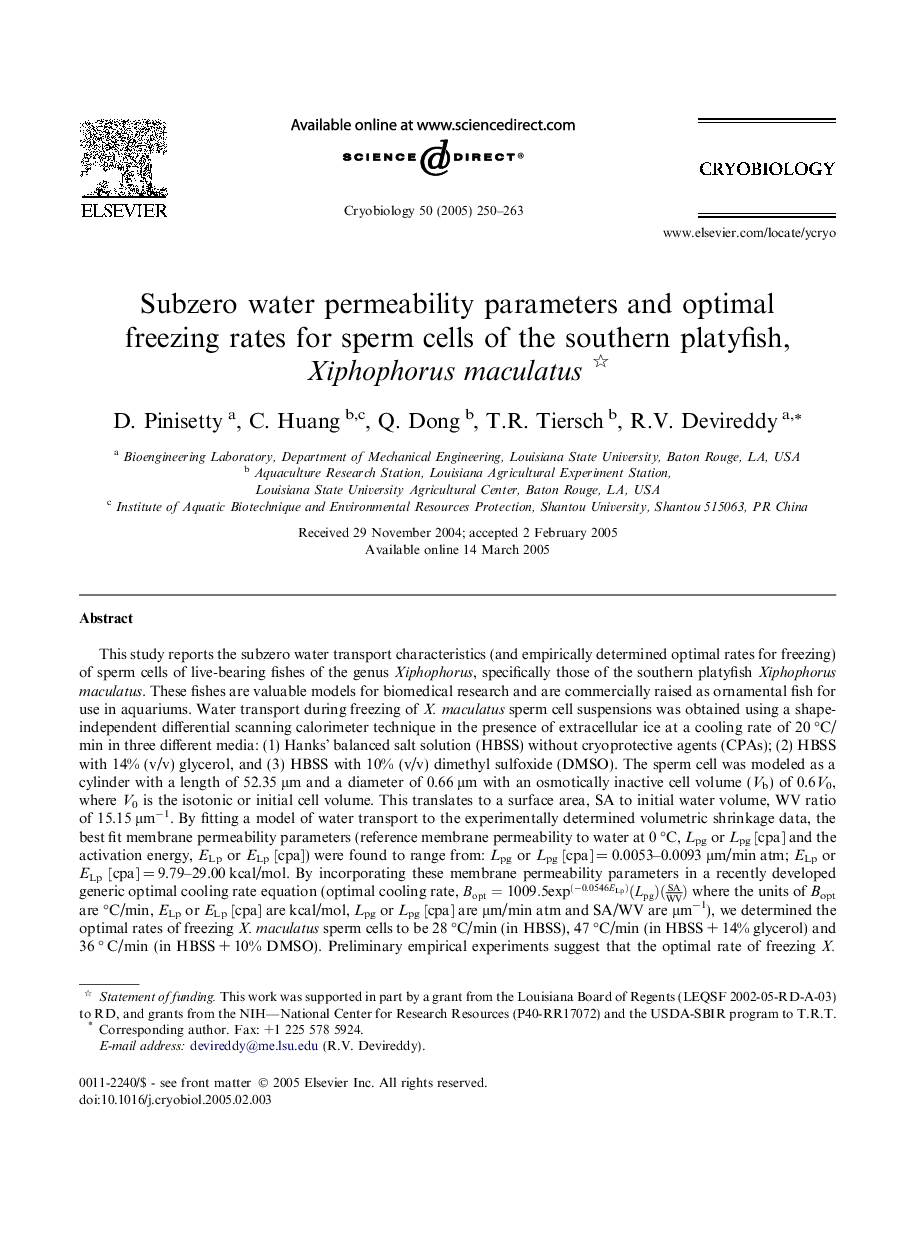| Article ID | Journal | Published Year | Pages | File Type |
|---|---|---|---|---|
| 9912191 | Cryobiology | 2005 | 14 Pages |
Abstract
This study reports the subzero water transport characteristics (and empirically determined optimal rates for freezing) of sperm cells of live-bearing fishes of the genus Xiphophorus, specifically those of the southern platyfish Xiphophorus maculatus. These fishes are valuable models for biomedical research and are commercially raised as ornamental fish for use in aquariums. Water transport during freezing of X. maculatus sperm cell suspensions was obtained using a shape-independent differential scanning calorimeter technique in the presence of extracellular ice at a cooling rate of 20 °C/min in three different media: (1) Hanks' balanced salt solution (HBSS) without cryoprotective agents (CPAs); (2) HBSS with 14% (v/v) glycerol, and (3) HBSS with 10% (v/v) dimethyl sulfoxide (DMSO). The sperm cell was modeled as a cylinder with a length of 52.35 μm and a diameter of 0.66 μm with an osmotically inactive cell volume (Vb) of 0.6V0, where V0 is the isotonic or initial cell volume. This translates to a surface area, SA to initial water volume, WV ratio of 15.15 μmâ1. By fitting a model of water transport to the experimentally determined volumetric shrinkage data, the best fit membrane permeability parameters (reference membrane permeability to water at 0 °C, Lpg or Lpg [cpa] and the activation energy, ELp or ELp [cpa]) were found to range from: Lpg or Lpg [cpa] = 0.0053-0.0093 μm/min atm; ELp or ELp [cpa] = 9.79-29.00 kcal/mol. By incorporating these membrane permeability parameters in a recently developed generic optimal cooling rate equation (optimal cooling rate, Bopt=1009.5exp(-0.0546ELp)(Lpg)(SAWV) where the units of Bopt are °C/min, ELp or ELp [cpa] are kcal/mol, Lpg or Lpg [cpa] are μm/min atm and SA/WV are μmâ1), we determined the optimal rates of freezing X. maculatus sperm cells to be 28 °C/min (in HBSS), 47 °C/min (in HBSS + 14% glycerol) and 36 ° C/min (in HBSS + 10% DMSO). Preliminary empirical experiments suggest that the optimal rate of freezing X. maculatus sperm in the presence of 14% glycerol to be â¼25 °C/min. Possible reasons for the observed discrepancy between the theoretically predicted and experimentally determined optimal rates of freezing X. maculatus sperm cells are discussed.
Keywords
Related Topics
Life Sciences
Agricultural and Biological Sciences
Agricultural and Biological Sciences (General)
Authors
D. Pinisetty, C. Huang, Q. Dong, T.R. Tiersch, R.V. Devireddy,
